9 Artworks From Artnet’s Gallery Network That Our Experts Are Loving This Week


Artnet Gallery Network

Every week, we explore the thousands of galleries on the Artnet Gallery Network to highlight the spaces and artworks inspiring us right now. Take a look at our latest picks below.
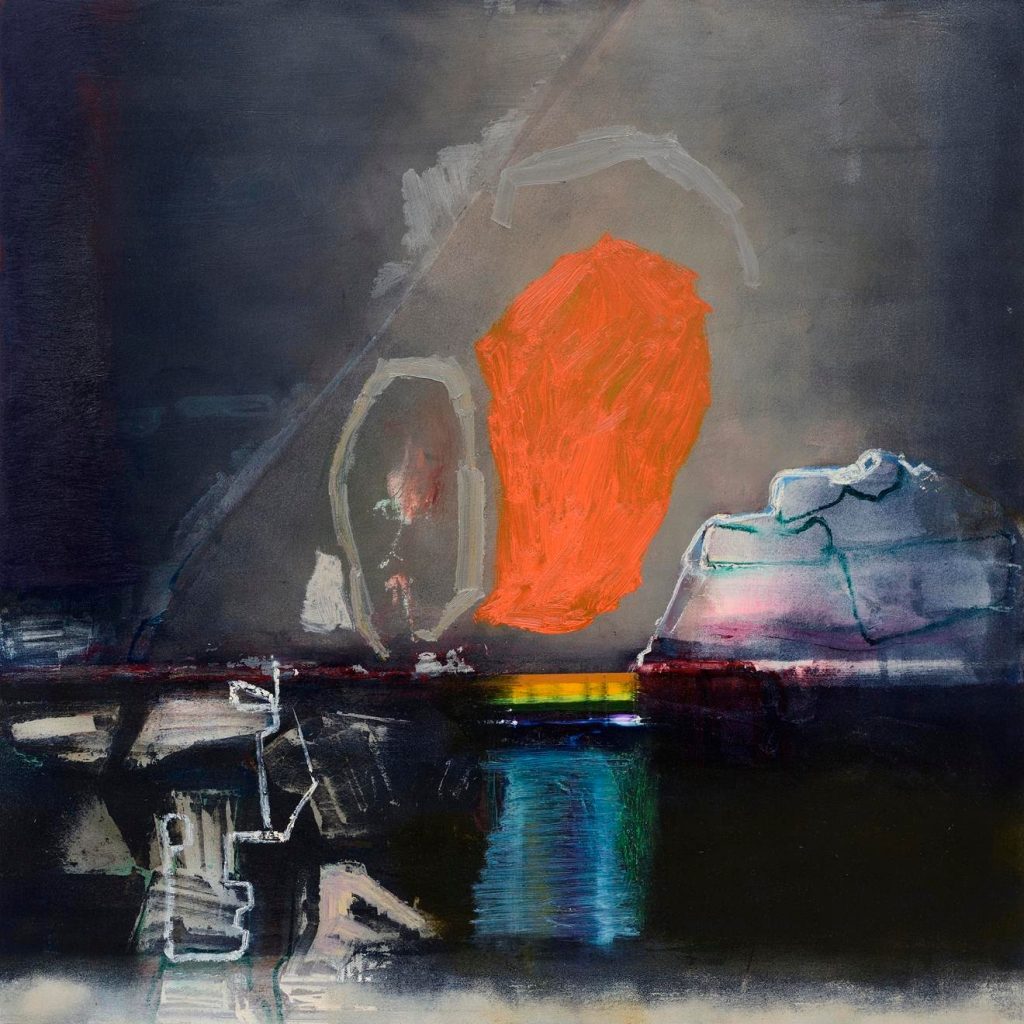
Kjell Torriset, Flare (2020). Courtesy of Galleri Brandstrup.
What is the flare here in the sky above an imaginary landscape? The mysterious light could be an aurora borealis, a collection of many stars, or a message from the universe. It fascinates me that the meaning of the light cannot be grasped and that there are no limits to our imagination.
—Alexandra Schott
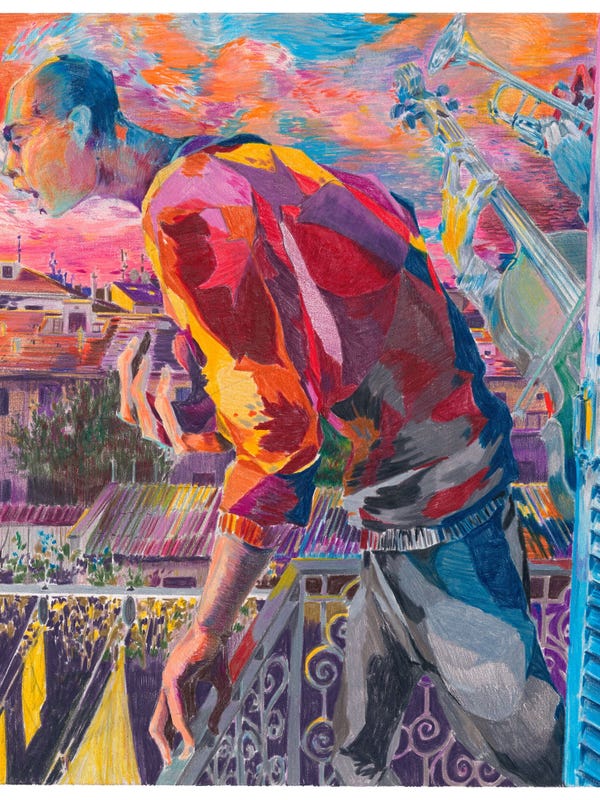
Esteban del Valle, The End is Near: Nessun’ Dorma (2020). Courtesy of LaMontagne Gallery.
This dynamic portrait of a figure emerging from their window and onto a balcony or fire escape is not only a time capsule of 2020, but a texturally rich work on paper completed entirely in colored pencil. This unexpected handling of materials captures the frantic energy of frustration many individuals experience, and are still facing due, to imposed restrictions on travel and movement. Esteban del Valle has created a triumphant response to the pandemic, both as a historical document and as a visual tour de force.
—Carson Wos
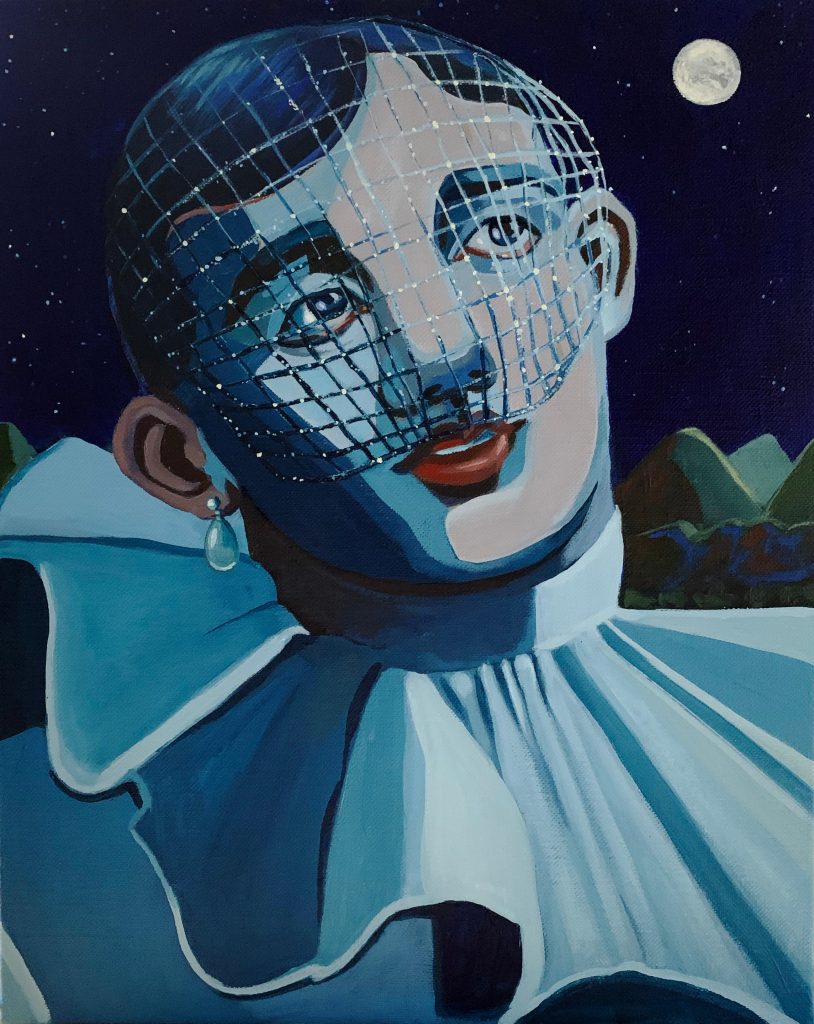
Annabel Faustin, The Starman (2021). Courtesy of Artistellar.
This acrylic on linen work by French artist, Annabel Faustin, is reminiscent of the anticipation of a night out. Wearing a bedazzled, netted mask, the figure in this portrait looks up to the moon with a look of hope. Faustin is currently having a solo show at Artistellar through March 8th.
—Cristina Cruz
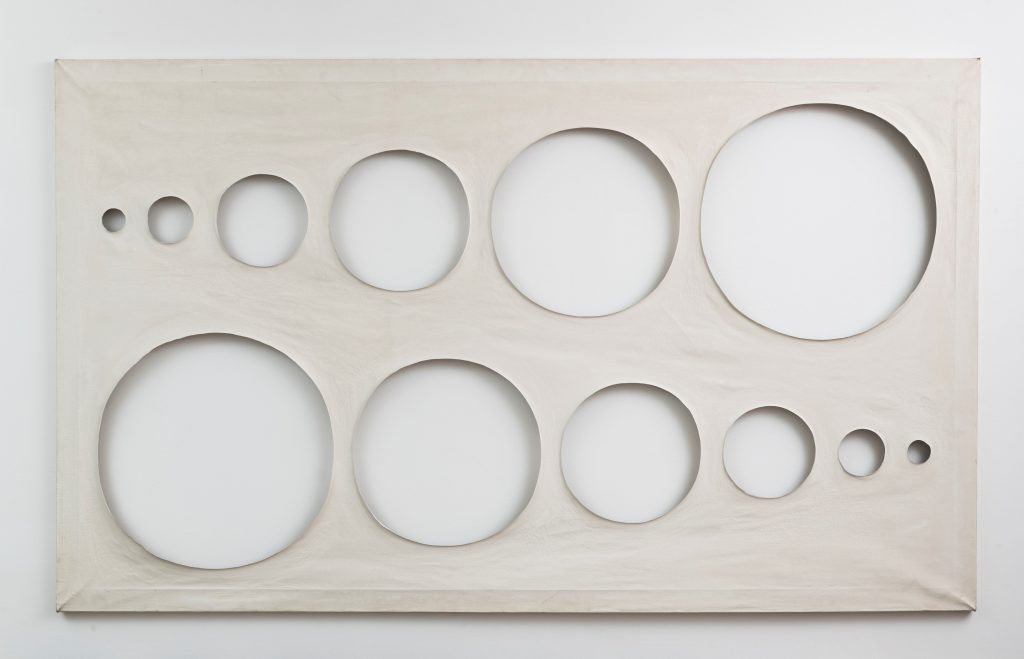
Dadamaino, Volume (1960). Courtesy of Cittadini Arte.
The artist Dadamaino (born Eduarda Emilia Maino) had a unique background—she both earned a degree in medicine and had a long involvement in political activism. In the 1950s she joined Lucio Fontana and the Italian movement of Spatialism, soon becoming one the most important representatives of the Italian avant-garde. Inspired by Fontana’s cut-off paintings, in the late 1950s, she began her work series “Volumi”, monochrome paintings in which the void becomes the forming element.
By cutting out circular pieces from the canvas, Dadamaino created artworks that oscillate between painting and object, and which implicitly understand the void as a volume in space. She carried out these cuttings to extremes in which the canvas is barely left as a “sculptural skeleton”. This development can be further seen in the series of “Volumi a moduli sfasati”, mixed media objects perforated by hundreds and thousands of holes. In the second half of the 1970s, Dadamaino disappeared for more than three years from the art scene in order to dedicate herself completely to her political activism in left-wing and Marxist movements. Her political engagement is indispensable to understand her oeuvre, especially her later work.
—Elmas Senol
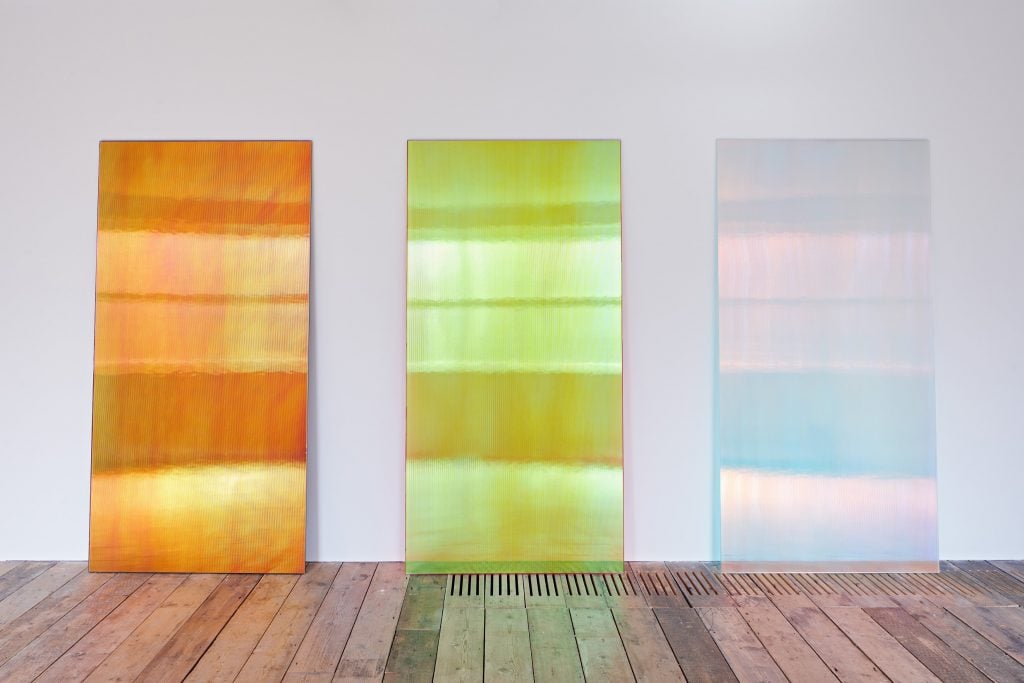
Ann Veronica Janssens, CL2BK, Pinky Sunset R, CL2 Blue Shadow (2019–2020). Courtesy of Simon Lee.
In her work CL2BK, Pinky Sunset R, CL2 Blue Shadow, artist Ann Veronica Janssens distills the color-fields our eyes see in a sunset into three glass panels. Not only are the panes of glass a stunning display of delicate color variation and iridescent color shifts, but as they lean on a wall and catch the light, these colors reflect onto the surrounding floor and wall, allowing this sunset to fill the dimensions of the room.
—Gillian Ochoa
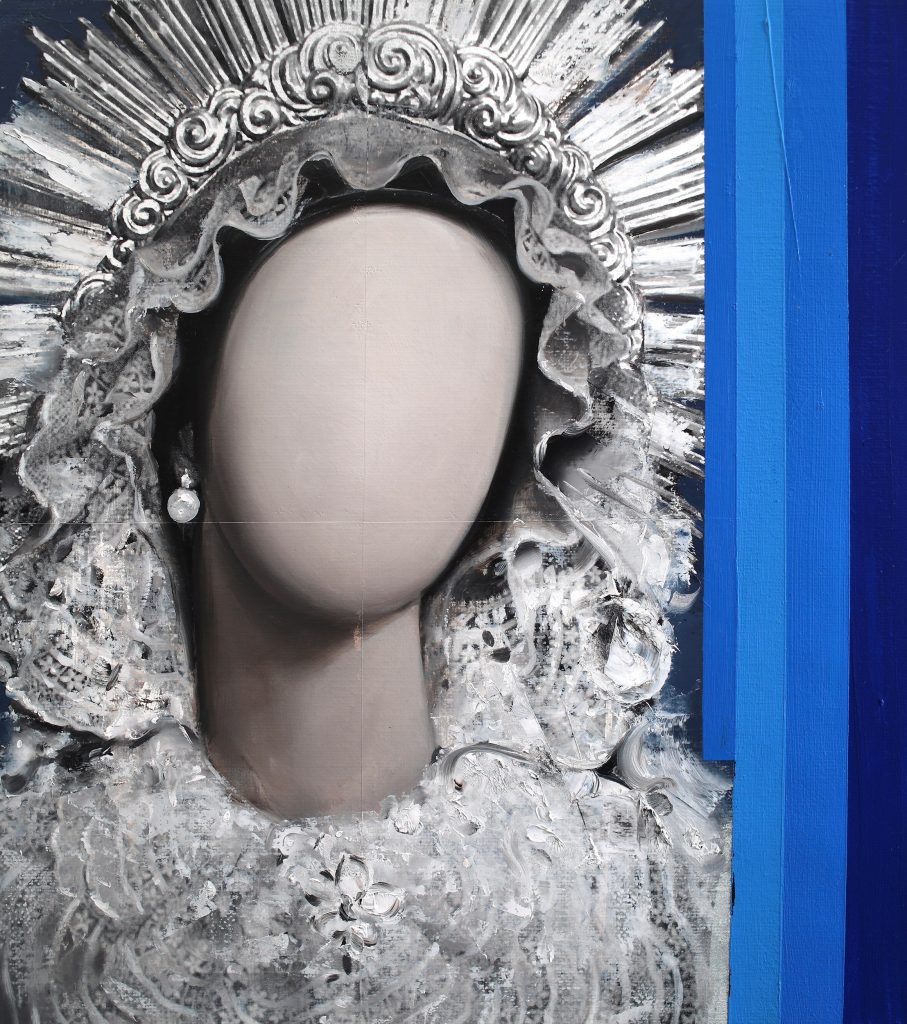
Mircea Suciu, Santa Sangre (2020). Courtesy of Zeno X.
Romanian artist Mircea Suciu’s works are psycho-sociological and often utilize art historical references while exploring identity, and the ways individual personality traits can get lost when confronted with the need to fit in.
—Karin Petit
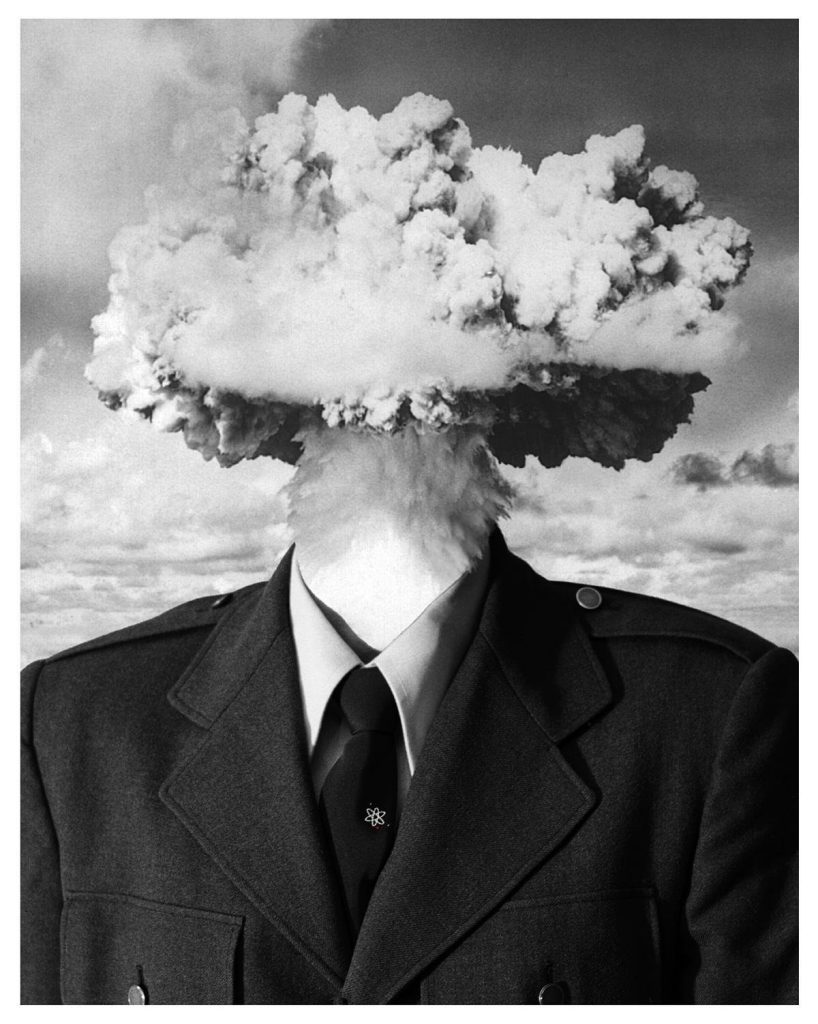
Bruce Conner, Bombhead (2002). Courtesy of Betsy Senior Fine Art.
Bruce Conner was an American artist who found inspiration in the surreal and the grotesque. This surreal print fully encapsulates the anxieties that most of us have been feeling in the past year bringing up images of a warring world and our own mortality. The black and white finish further contributes to the magnitude of the explosion and conjuring up historic calamities.
—Neha Jambhekar
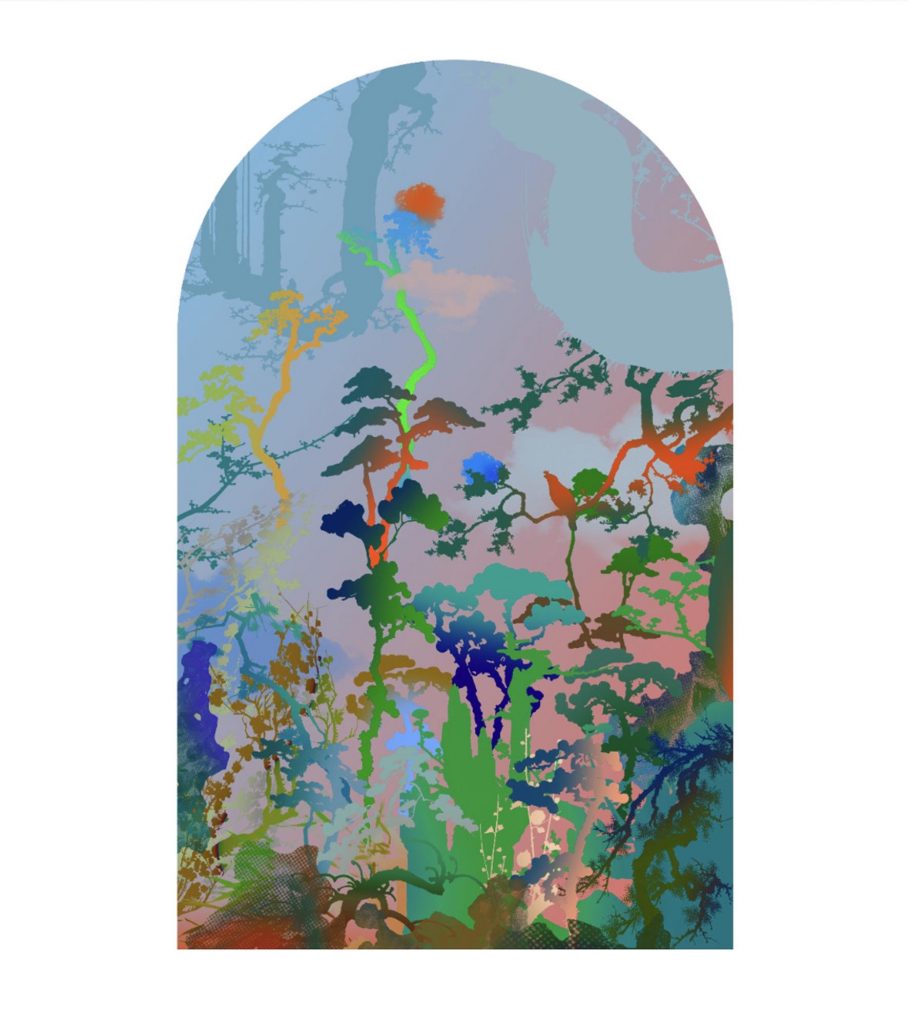
Guang-Yu Zhang, Tunnel I. The Contemporary Art Modern Project Gallery.
Guang-Yu Zhang’s works are saturated and densely layered portals that teeter between kaleidoscopic abstractions and surreal landscapes. His varying use of canvas shapes, photographic manipulation, and shadow boxes further enhance the works’ magical quality. As seen in his recent collaboration with Hennessy, and soon with Carlsberg, Guang-Yu Zhang does not shy away from mixing traditional Chinese elements with the flashy sensibilities of Pop.
—Santiago Garcia Cano
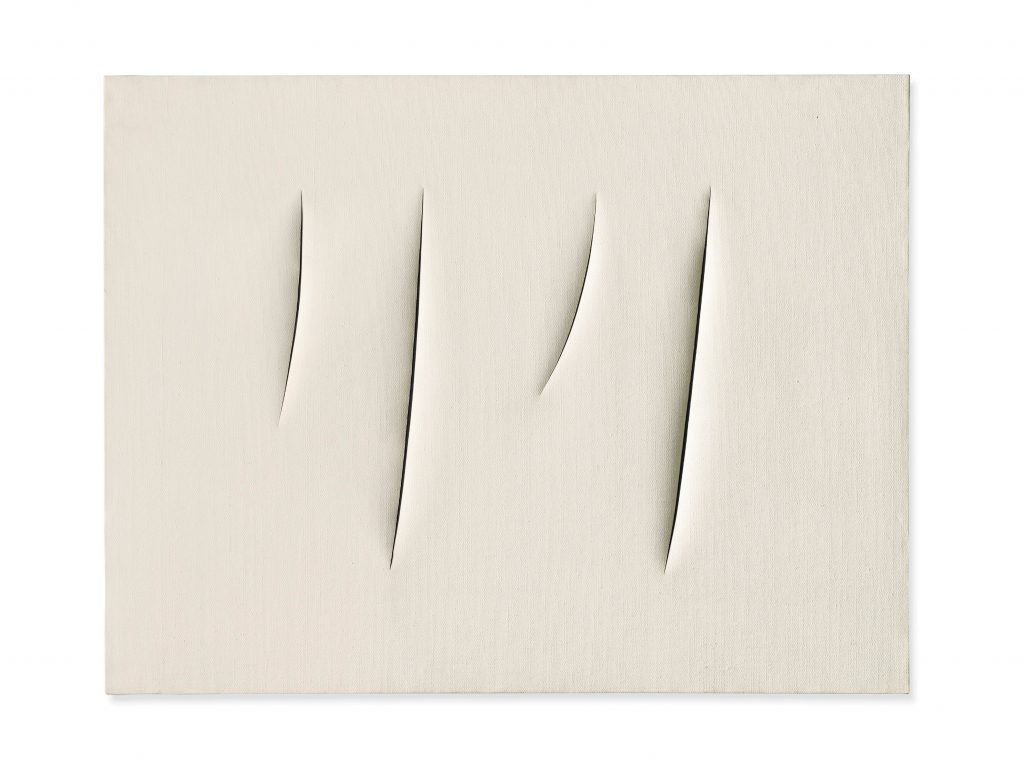
Lucio Fontana, Concetto Spaziale, Attese (1960). Courtesy of Robilant & Voena.
Lucio Fontana’s monochrome paintings with dramatic slashes directly into the canvas are icons of the 20th century and this pure white piece speaks eloquently and unsettlingly of the huge shifts that took place culturally in the post-war period.
—Sara Carson